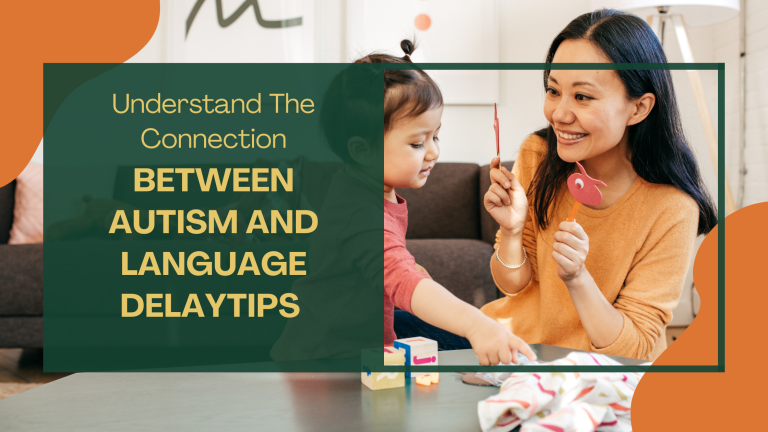How to Support Students with ADHD Remotely with Teletherapy
Teletherapy for students with ADHD provides flexible, evidence-based strategies that enhance focus, alleviate stress, and support students’ remote success. Students with Attention Deficit Hyperactivity Disorder…
Teletherapy for students with ADHD provides flexible, evidence-based strategies that enhance focus, alleviate stress, and support students’ remote success.
Students with Attention Deficit Hyperactivity Disorder (ADHD) face unique challenges when learning remotely. The lack of structure and in-person support can make it hard to stay focused and organized. However, telemental health services, including teletherapy, offer an effective way to deliver essential mental health care and academic support remotely.
Teletherapy connects students with mental health professionals who can help them develop coping strategies and stay on track academically. Through video calls and online resources, therapists can work with students to improve motor skills, time management, organization, and focus. These behavioral treatments are specifically designed for remote learning environments and can have a significant impact on student success.
Additionally, teletherapy can be seamlessly integrated into a student’s remote learning schedule. Therapists can coordinate with teachers and parents of children with ADHD to create a holistic plan. They may suggest assistive technologies, such as timers or reminder apps, to enhance productivity. With the right strategies and support, children with Attention Deficit Disorder (ADD) or Attention Deficit Hyperactivity Disorder (ADHD) can thrive in remote learning settings.

Understanding ADHD in the Context of Remote Learning
ADHD presents unique challenges for students in online learning environments, particularly in terms of maintaining focus and requiring structured support.
The Basics of ADHD
ADHD is a mental health condition that affects focus, impulse control, and activity levels. According to the American Psychiatric Association, ADHD comes in three types:
- Inattentive
- Hyperactive-impulsive
- Combined
Each type impacts learning differently, making the treatment of children with ADHD a personalized process.
Challenges of ADHD in Remote Settings
Remote learning removes many built-in school structures that help students with ADHD stay on track. At home, students may struggle with:
- Staying focused during video lessons
- Managing time and schedules
- Forgetting to log in to classes
- Completing independent work
Without in-person support, students can feel disengaged, making mental health services critical. Therapists working within a telehealth service delivery model can help create personalized strategies, such as:
- Setting up a quiet study space
- Using timers for tasks
- Breaking work into smaller steps
- Scheduling regular check-ins
Foundation Strategies for Teletherapy
Effective teletherapy for students with ADHD relies on a structured environment and technology that enhances engagement.
Creating a Structured Environment
To maximize the benefits of teletherapy, students need a quiet, distraction-free space. Parents can support their child’s learning by:
- Removing noise-making distractions
- Using visual schedules or timers
- Providing behavioral treatments like fidget tools to aid focus
Technological Considerations
For effective telemental health services, therapists should utilize platforms that offer features such as screen sharing, virtual whiteboards, and breakout rooms. Ensuring a stable internet connection and utilizing interactive online resources, such as quizzes and digital games, can enhance student engagement.
Teletherapy Techniques for Engagement
Keeping students engaged during teletherapy sessions requires creative approaches.
Interactive Tools and Resources
Teletherapy can be enhanced using:
- Digital whiteboards for interactive learning
- Educational games that build focus
- Virtual reward systems that boost motivation
- Online scavenger hunts to reinforce lessons
Maintaining Focus During Sessions
Techniques to help students with ADHD stay engaged include:
- Keeping sessions short
- Breaking tasks into manageable steps
- Allowing movement breaks
- Using family therapy techniques to involve caregivers
By incorporating these strategies, therapists can enhance the effectiveness of ADHD treatment.

Behavioral Strategies and Supports
Positive Reinforcement Methods
Behavioral interventions for ADHD include:
- Skills to parents on managing focus challenges at home
- Reward systems like digital sticker charts
- Frequent feedback to reinforce positive behaviors
Customizing Behavioral Interventions for Children
Every child with ADHD has unique needs, requiring customized interventions such as:
- Checklists for multi-step assignments
- Timers to structure work periods
- Family therapy sessions to ensure parents can provide the right support at home
Collaboration with Parents and Caregivers
Parents of children with ADHD play a critical role in their success. Regular communication between therapists and families strengthens mental health care strategies.
Effective Communication
Therapists should set up check-ins with parents to:
- Discuss student progress
- Identify home-based challenges
- Provide guidance on behavioral treatments
At-Home Strategies for Parents
Parents can help by:
- Setting up a quiet workspace
- Using organizational tools like Trello
- Incorporating mental health services as needed
Providing parents with skills ensures that support extends beyond teletherapy sessions.
Educational Adaptations for Remote Learning
Curriculum and Instruction Modifications
For students with ADHD, teachers can modify remote learning by:
- Breaking lessons into short, engaging segments
- Using visuals and interactive elements
- Offering flexible assignment formats
Individualized Education Program (IEP) Considerations
Students with IEPs may require accommodations like:
- Extra time for assignments
- Assistive technology
- Regular teacher check-ins
Collaborating with teachers ensures students receive the necessary support.
Supporting Emotional and Social Needs
Students with ADHD may struggle with emotional regulation and social skills. Teletherapy offers opportunities to develop these essential skills.
Social Skills Development
Strategies include:
- Group therapy via video chat
- Role-playing social scenarios
- Using online games for teamwork-building
Emotional Regulation Techniques
Techniques such as deep breathing, guided imagery, and mindfulness exercises can help students manage emotions. Using a family therapy approach can further support emotional well-being.

Professional Development and Continuous Learning
Staying Informed on ADHD and Teletherapy Research
Mental health professionals should stay updated on ADHD research through:
- Publications like those by Gould MS, Valentine JM, and McCarty C
- The Myers K. Methodology for online therapy models
- Webinars on telehealth service delivery models
Building a Support Network Among Professionals
Joining forums and collaborating with peers enhances the effectiveness of ADHD teletherapy. By working together, professionals can share best practices and innovative mental health services.
Resources and Tools
Recommended Reading and Literature
Books like “Driven to Distraction” and “Smart but Scattered” provide valuable insights into ADHD. Research from the American Psychiatric Association supports evidence-based strategies.
Online Platforms and Applications
Helpful apps include:
- Focus@Will for concentration
- Trello for task management
- Forest for building focus habits
Frequently Asked Questions
What strategies help engage children with ADHD in remote therapy?
Using visual aids, short sessions, and interactive activities helps maintain focus.
Can cognitive behavioral therapy (CBT) for ADHD be delivered effectively online?
Yes, research supports telehealth service delivery models for CBT in ADHD treatment.
What are the best practices for managing ADHD symptoms when working from home?
Strategies include time blocking, structured breaks, and noise reduction techniques.
Conclusion
Teletherapy offers a powerful way to provide mental health care and educational support for students with ADHD. By utilizing online resources, family therapy, and behavioral treatments, students can build essential skills and thrive in remote learning environments.






